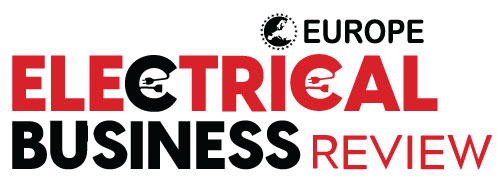Thank you for Subscribing to Electrical Business Review Weekly Brief
I agree We use cookies on this website to enhance your user experience. By clicking any link on this page you are giving your consent for us to set cookies. More info
Overcoming Challenges on the Road to Electrification: Accelerating the Adoption of Electric Vehicles
The electric vehicle (EV) revolution is gathering momentum as governments, industries, and consumers unite to pursue a cleaner, more sustainable transportation future.

By
Electrical Business Review | Monday, May 15, 2023
Stay ahead of the industry with exclusive feature stories on the top companies, expert insights and the latest news delivered straight to your inbox. Subscribe today.
While challenges exist on the road to electrification, proactive measures can overcome them and propel the widespread adoption of electric vehicles.
FREMONT, CA: The electric vehicle (EV) revolution is gathering momentum as governments, industries, and consumers unite to pursue a cleaner, more sustainable transportation future. While the benefits of EVs are widely recognized, several challenges that require proactive solutions persist. In this article, we delve into key obstacles hindering the widespread adoption of electric vehicles and explore strategies to overcome them, ensuring a smoother transition to an electrified automotive landscape.
1. Infrastructure Expansion: One of the primary challenges in embracing EVs is the need for a robust charging infrastructure. Governments and private entities must collaborate to accelerate the deployment of charging stations to address range anxiety and facilitate convenient charging options. Increased investments in public charging networks along highways and urban areas will alleviate concerns and encourage more consumers to switch to electric vehicles.
2. Battery Technology Advancements: Battery technology plays a pivotal role in the success of electric vehicles. Improving energy density, charging speeds, and battery lifespan will significantly enhance the appeal and functionality of EVs. Continued research and development efforts, coupled with investments in manufacturing scale-up, are essential to accelerate advancements in battery technology and drive down costs. Such progress will make EVs more accessible and appealing to a broader consumer base.
3. Affordability and Incentives: While electric vehicle costs have reduced over time, upfront prices still pose a barrier for many potential buyers. Governments can play a critical role in incentivizing EV adoption through financial incentives, such as tax credits, rebates, and subsidies. These measures make electric vehicles more financially viable and accelerate their market penetration, ultimately driving economies of scale and reducing manufacturing costs.
4. Consumer Education and Awareness: Educating consumers about the benefits of electric vehicles is crucial for widespread adoption. Many potential buyers still harbor misconceptions about EVs, such as concerns over limited driving range, charging availability, and battery performance. A comprehensive public awareness campaign highlighting EVs' environmental, economic, and performance advantages can dispel myths and promote informed decision-making among consumers.
5. Collaboration and Standardization: Collaboration among various stakeholders is paramount to overcoming barriers to EV adoption. Industry players, governments, utilities, and charging infrastructure providers must work together to establish common standards for charging infrastructure, payment systems, and interoperability. Such collaboration will ensure a seamless and user-friendly charging experience, regardless of the EV brand or charging station used, fostering consumer confidence and driving widespread adoption.
6. Sustainable Energy Integration: The electrification of transportation must be accompanied by the integrating of renewable energy sources. Promoting the use of clean energy for charging infrastructure and encouraging vehicle-to-grid (V2G) technology can maximize the environmental benefits of EVs. V2G allows EVs to act as mobile energy storage units, feeding excess energy back into the grid during peak demand periods, thereby reducing strain on the electrical infrastructure and supporting a more resilient and sustainable energy grid.
Conclusion: While challenges exist on the road to electrification, proactive measures can overcome them and propel the widespread adoption of electric vehicles. Investing in charging infrastructure, advancing battery technology, providing incentives, fostering consumer education, promoting collaboration, and integrating sustainable energy sources are key strategies to overcome obstacles. By addressing these challenges head-on, we can accelerate the transition to electric vehicles, ushering in a cleaner, greener, and more sustainable future for transportation.








